In April 2025, Delhi experienced an intense heatwave, recording the hottest day of the year so far and the warmest night in six years. It also marked the highest maximum temperature for April in the last three years. These conditions, now becoming more frequent and severe, are a stark reminder of the urgent need to address heat-related risks. The ongoing red and orange alerts for several northern Indian states due to extreme heat highlight the escalating impact of climate change on the subcontinent.
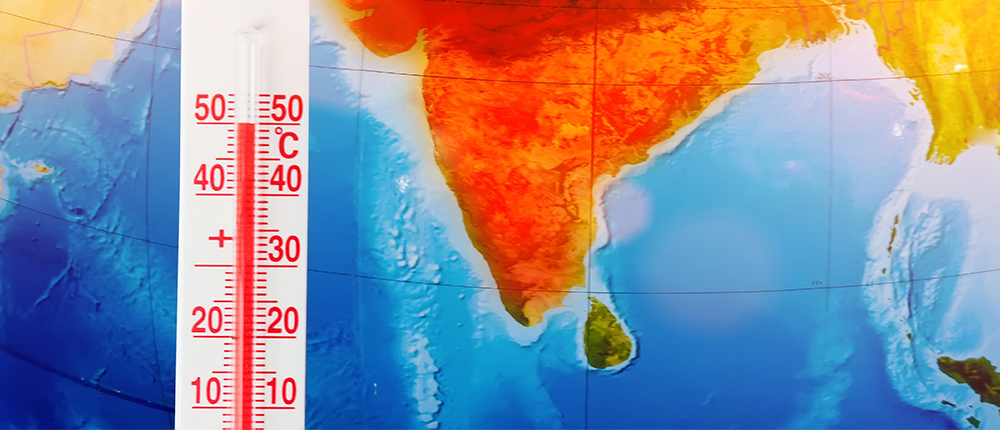
India experienced over 280 heatwave days[1] across 16 Indian states from March 11 to May 18, 2022—an alarming rise, signalling a worrying trend of more frequent, intense, and prolonged heatwaves, particularly affecting vulnerable populations and straining essential infrastructure such as healthcare, water supply, and power grids.
Rising Temperatures across the Subcontinent
India lies in the tropics and experiences high temperatures given its global location. With climate change, temperatures have risen exceedingly, thus presenting adverse effects of various kinds. Digging into the data from the past, we observe that trends indicate both an increase in temperatures and the number of hot days.
Projections further indicate a rise in maximum and minimum temperatures across the subcontinent, along with an increase in the number of hot days (Figures 1, 2) in the coming decades. As a result of this temperature rise, heatwave conditions have become more frequent. The data over the years show how these incidences have increased, causing greater impact. Climate change contributes to the increased risks associated with heatwaves, thereby threatening the lives of many.
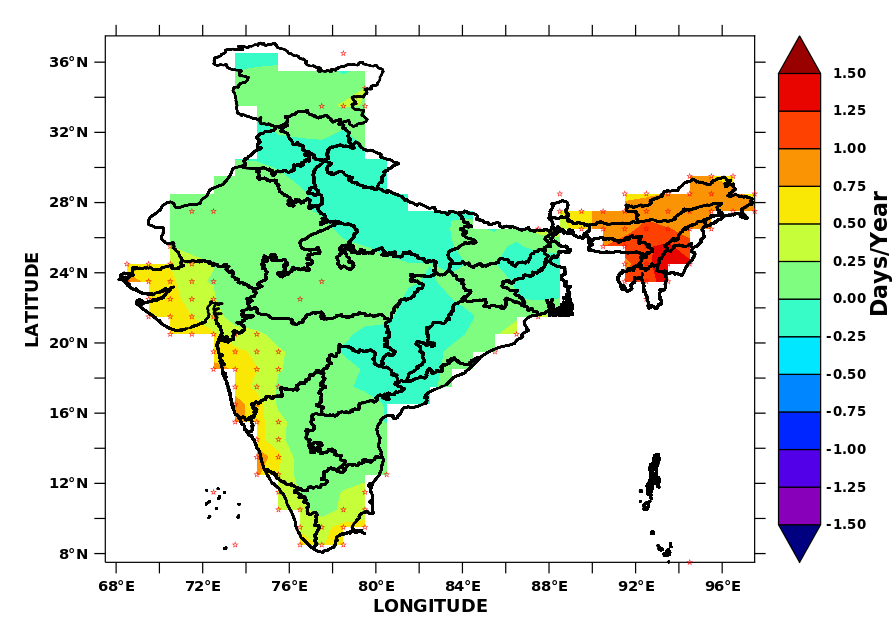
Figure 1: Hot days trends during 1974–2023; TERI analysis in map
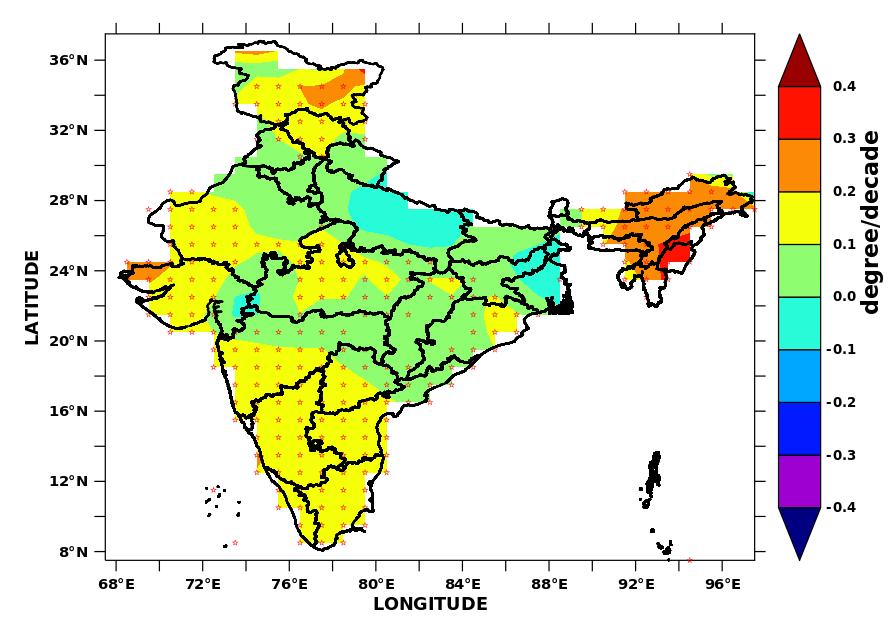
Figure 2: Tmax trend during 1974–2023. Here, Tmax refers to the maximum temperature. This figure shows the variability in temperature trends over India, ranging from 0.1 to 0.4°C per decade. The red dots indicate statistically significant trends; TERI analysis in map
Health and Economic Consequences of Heatwaves
Consistent temperatures over a number of days above climatological normals lead to heatwave conditions. The health-related effects are largely in the form of heat strokes, dehydration, organ failure (gastrointestinal damage, kidneys, lungs), and cardiac arrests. In extreme cases, these conditions can lead to mortality.
Heatwaves also cause a significant decline in work productivity. Some studies suggest that productivity losses could be as high as one-third among the working population. The brunt of this is borne by people working outdoors—including those engaged in manual labour and land-based livelihoods—potentially resulting in economic costs that run into billions of dollars.
Strengthening Response through Heat Action Plans
There is a strong need to strengthen the Heat Action Plans (HAPs). Warnings need to be communicated in formats that are easily understood by the public, with clear guidelines on what actions to take during extreme heat events.
Standard Operating Protocols (SOPs) for heatwave conditions should include measures such as:
- Avoiding outdoor movement during peak hours
- Preventing work during high-heat periods
- Staying hydrated and seeking shade
- Remaining in cooled spaces where available
In informal settlements, where access to cooling devices may be limited, simple techniques such as placing wet jute bags on doors and windows can help cool indoor spaces.
A Call for Climate-Resilient Urban Planning
At a broader level, urban planning must integrate climate resilience. Landscaping and design that supports temperature regulation must be prioritized in city development plans.
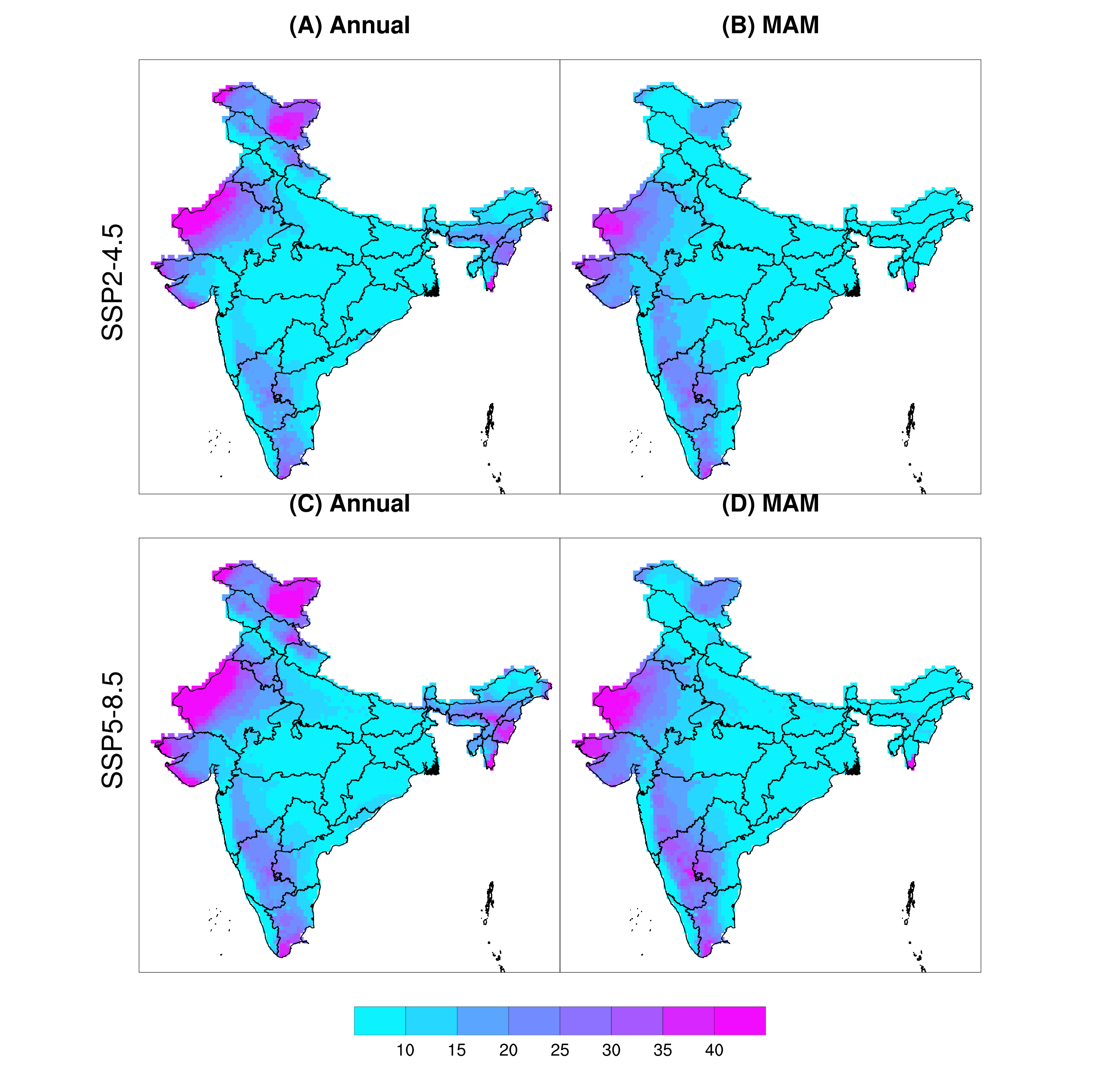
Figure 3: Projected change in hot days for the period 2025–2055 (ref 1981–2010). This shows the projected changes in maximum temperature and the number of hot days during the near-future period, relative to the model baseline. Both parameters exhibit a clear increasing trend; TERI analysis in map
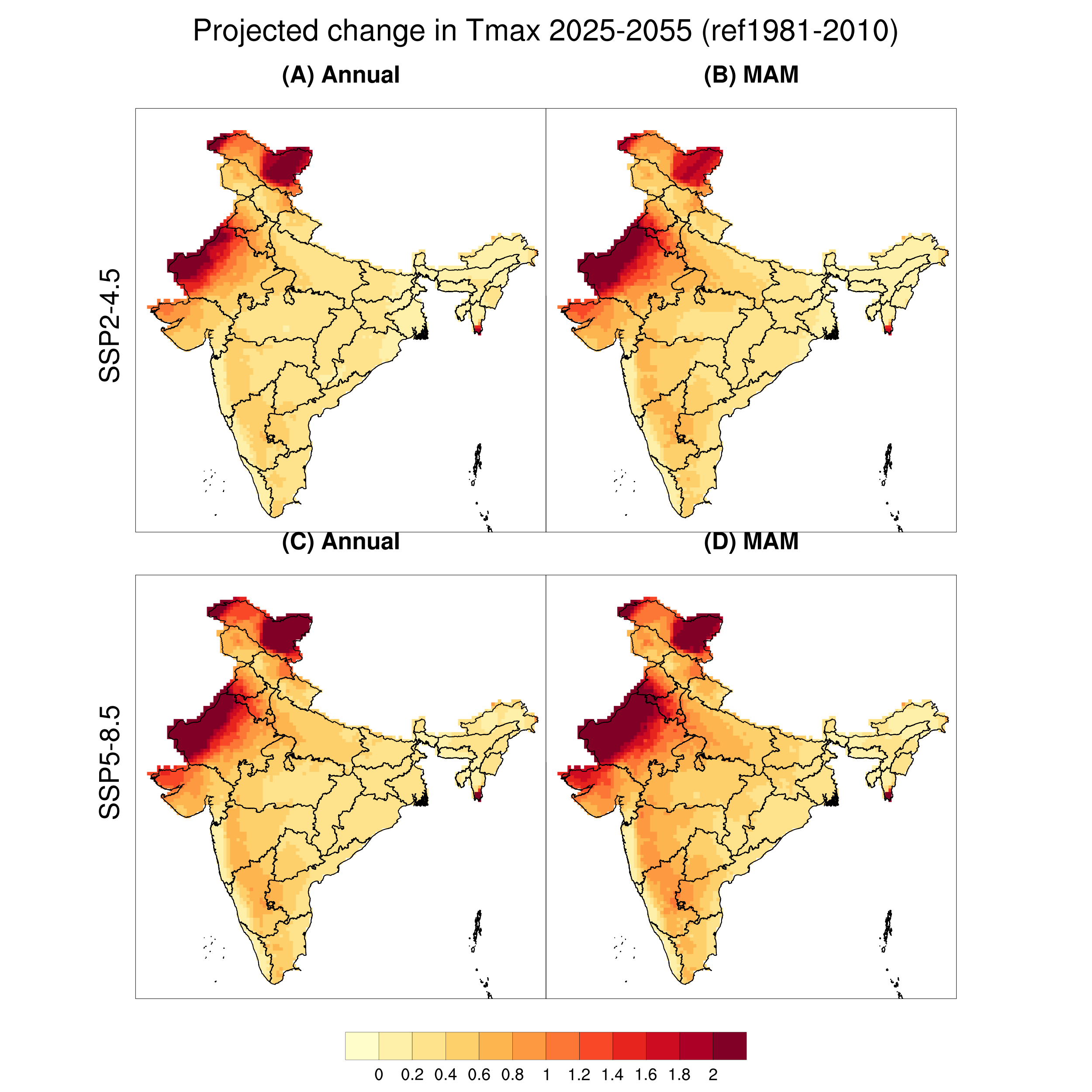
Figure 4: TERI analysis in map
Given the extreme impacts of heatwaves (Figures 3, 4) on human life, there is a critical need to address this issue adequately and reduce associated health risks through timely planning and implementation.
Strengthening early warning systems, implementing robust HAPs, and integrating climate resilience into urban development are no longer optional—they are essential. Protecting vulnerable populations and building adaptive infrastructure will determine how well the nation can withstand this escalating climate threat. The time to prioritize heat preparedness and long-term resilience is now.
[1] In climatological terms, “heatwave days” refer to the cumulative number of heatwave days recorded across all IMD stations or districts in the country during that period—not total calendar days. For example, if 10 locations each report a heatwave for 3 days, that will be 30 heatwave days in total.

